This is a story of adaptation, by both plants and their people. It's set in the fire-prone foothills of eastern Butte County, where in 1994 David and Cathy Walther purchased a home on 1.5 acres. The property sits on a gentle slope above the Feather River Canyon and is reached by roads that wind steeply up the hill and then through the undulating topography of Yankee Hill.
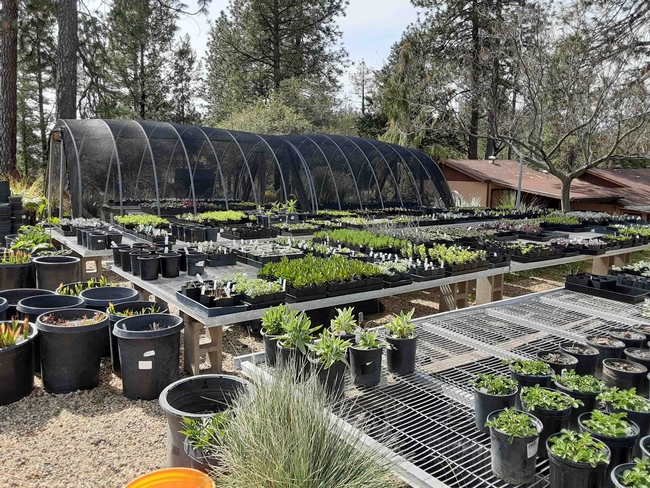
Two raging infernos (the Poe Fire in 2001 and the Camp Fire in 2018), two terrifying evacuations, and 27 years later, they and their plants continue to adapt to new conditions in the burn scars that show how close these fires came to the walls of their home.
In the deep shade provided by 20 or so immense pines on the west side of their acreage in the early years, they began to amend the thin red clay soils and introduce a large assortment of plant species. They drew from hardy perennials and shrubs native to Mediterranean climates, including Proteus, Hebe, summer-blooming Cyclamen, Hellebore, Calanthe orchid, Podophyllum, and Echium, to name just a few. David is especially interested in plants that have whimsical “Dr. Suess” shapes and uncommon flowers and foliage.
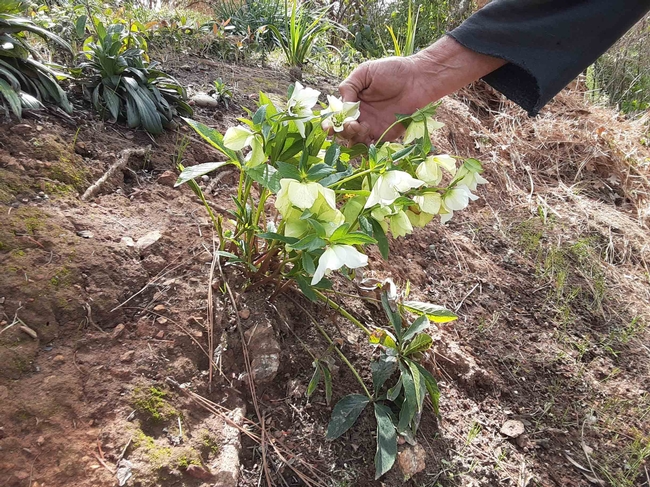
The plants were also a form of retirement planning. David figured he could learn what would survive here and then offer other gardeners new choices: a larger palette of colors, textures, and shapes than are normally sold in our area. In fact, some of the species David began to grow are so uncommon that it is difficult to find information on propagating them. Which meant lots of trial and error: taking and planting cuttings at various times of year; trying different types of cuttings.
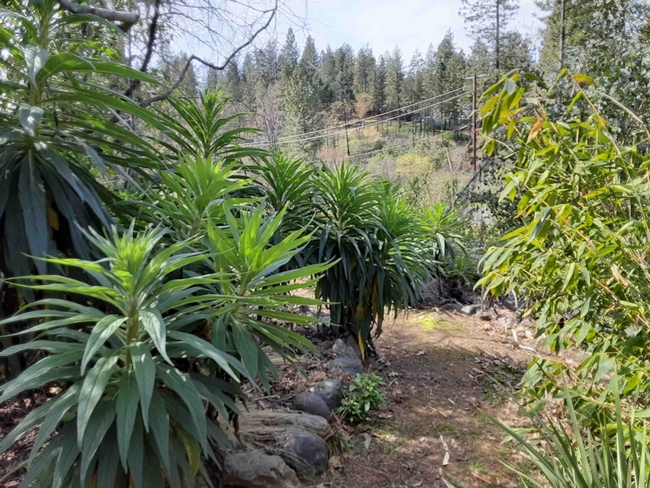
And then the Poe Fire roared up the hill, forcing the Walthers and their pets to evacuate once again. Returning home to find their gardens, nursery, and home intact while surrounding areas had burned (in fact, fire fighters used their greenbelt as a refuge), the Walthers adapted by turning adversity to advantage. Their neighbor to the east was done with foothill fires and, by acquiring that adjacent property, tearing out burnt stumps (“it looked like a war zone”), and leveling the remaining area, Spring Fever grew to a large, beautifully organized commercial nursery, complete with shade and green houses and metal tables, all sitting atop a bed of pea gravel.
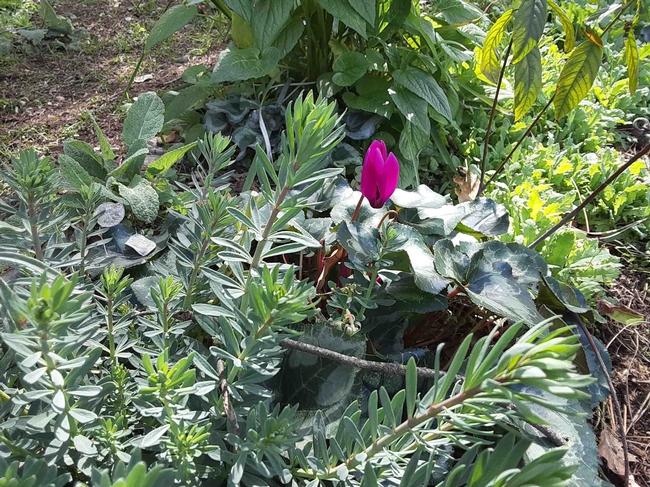
Their plants are propagated from cuttings, seeds, or divisions: any way David can create one plant from another. They remain in the nursery through two growing seasons in order to develop an adequate root system and prove their hardiness, experiencing heat, wind, frost (even, occasionally, snow), and sometimes deer. As David says, “If I didn't kill it, you can keep it alive.”
In between the Poe Fire and the Camp Fire, the Walthers continued to play with an astounding variety of plants. Cathy had a special circular garden just behind the house packed with aromatic and unusual herbs. An enormous Royal Paulownia (empress tree) towered beyond that, filling the air with an intoxicating fragrance each spring. One of the most charming aspects of the Walthers' landscape was its rambunctious exuberance; they encouraged all sorts of plants to co-exist. Theirs was not a fussy garden in which one was afraid to step off the path. Their garden invited one to wander, discover, and revel in the sheer wonder of the plant kingdom.
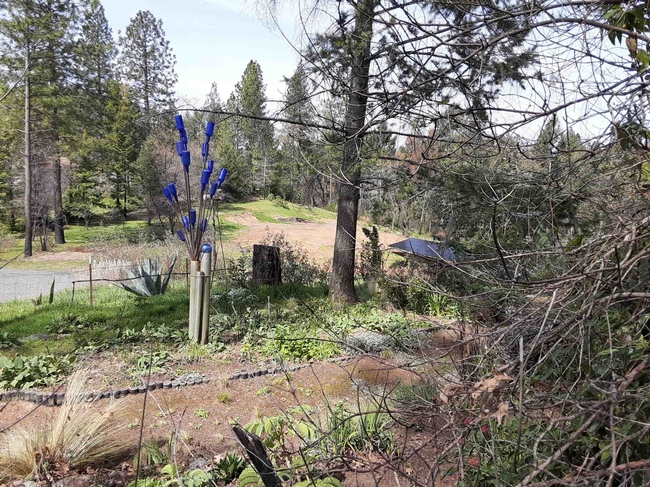
The Camp Fire watch word is “resilience.” The one that came out of the Covid pandemic is “pivot.” Add them together and you get adaptation. When the ash and dust cleared in late 2018, that is exactly what the Walthers did with their remaining plants. Some wonderful things resulted in the wake of that fire. For instance, in a newly sundrenched patch of yard a forest of foxgloves volunteered. Huge echium (the beloved Dr. Suess plants) are popping back up all over the place. What David calls a “freak hellebore,” a beauty with white flowers, began to thrive in more sun than he thought possible. Other hellebores were basking in the now-open canopy, and David found that they bloom more prolifically now than they did in the deep shade. He estimates that, compared to where they lived the first year, the successive fires have thinned out about three-quarters of the forest.
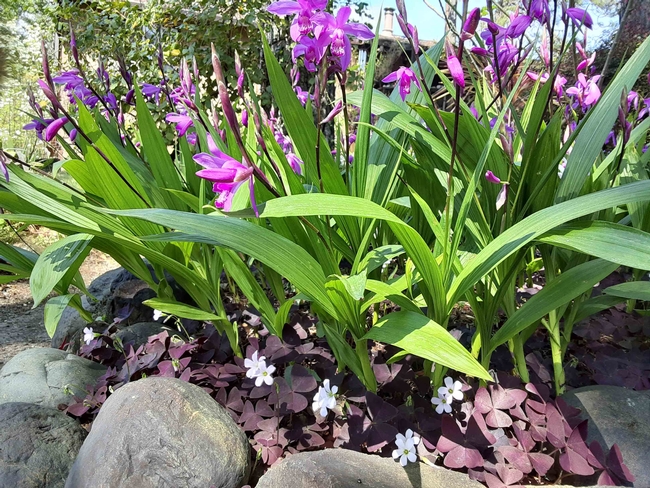
David is grateful to Magnolia Gift and Garden for their support – you can find Spring Fever Nursery plants there. Spring Fever Nursery is open by appointment and is holding a Comeback Sale on May 9 (Mothers' Day) and May 10! Please check their Facebook Page for more details.
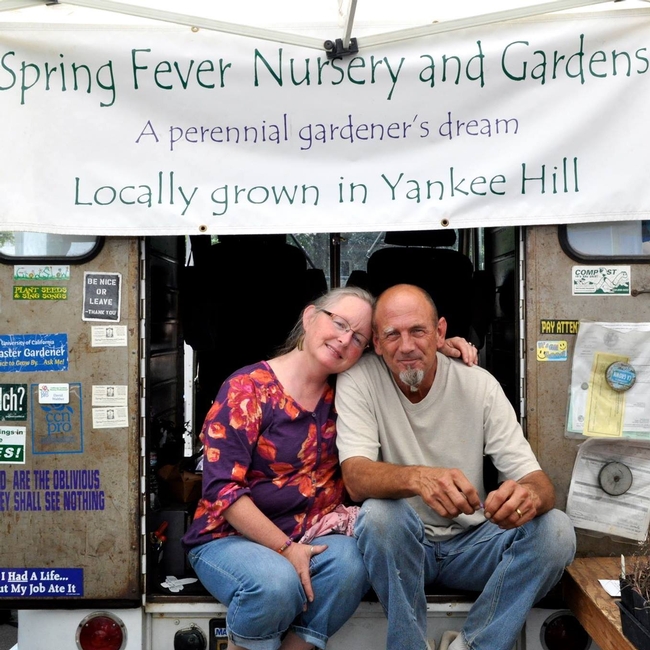
UC Master Gardeners of Butte County are part of the University of California Cooperative Extension (UCCE) system. To learn more about us and our upcoming events, and for help with gardening in our area, visit our website. If you have a gardening question or problem, email the Hotline at mgbutte@ucanr.edu (preferred) or call (530) 538-7201.